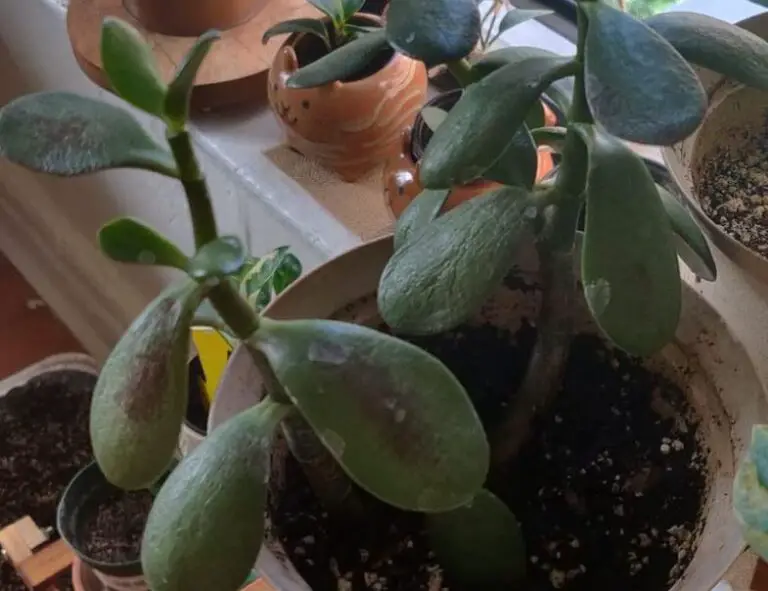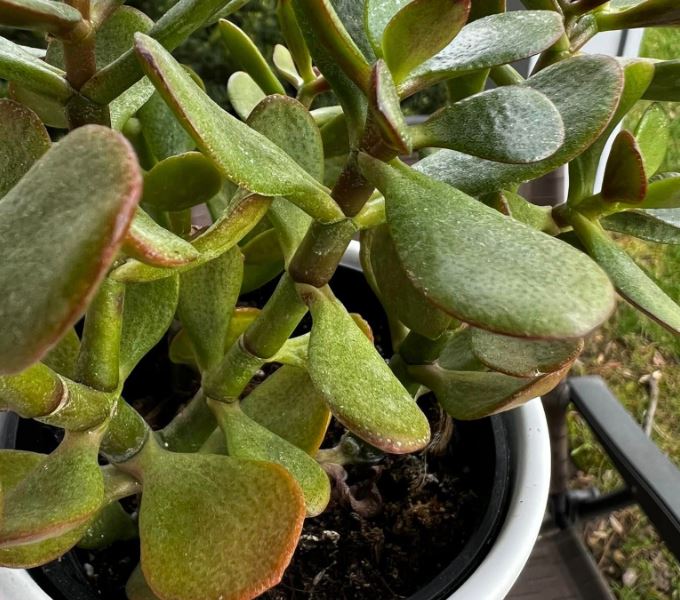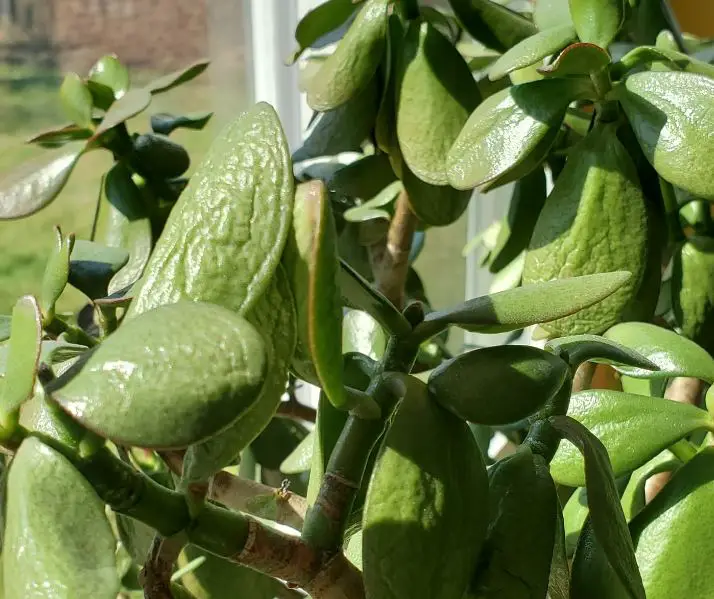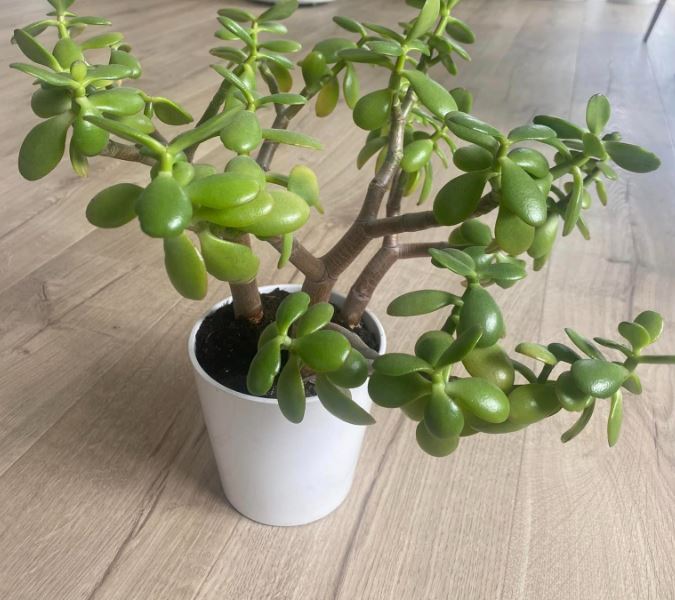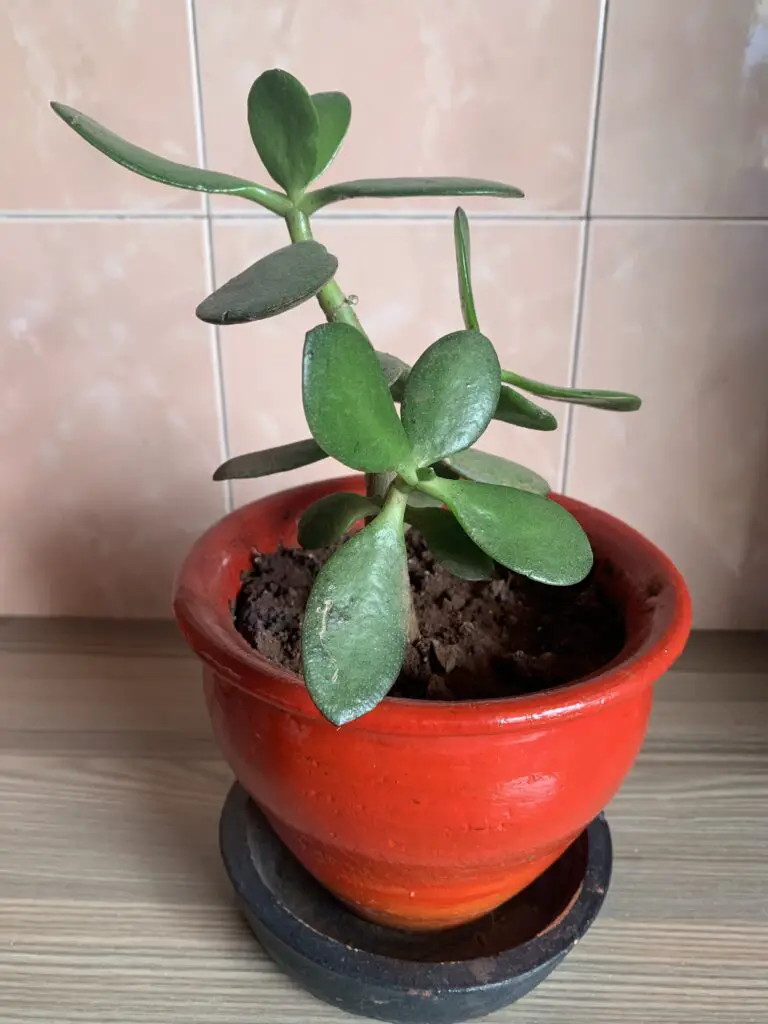How to Fix a Leggy Jade Plant – 6 Effective Ways
Jade plants (Crassula ovata) are easy to grow and maintain. Their growth rate is pretty slow but they have a long lifespan of up to 60 years in the right growth conditions. Their fleshy oval-shaped leaves are attractive to look at but not when the plant is leggy.
The jade plant needs at least 6 hours of bright indirect sunlight per day. In low light conditions, this plant will stretch its stems in an attempt to reach the light source. This can result in unhealthy-looking leggy plants that can easily lean and fall over.
This is a natural phenomenon for plants described as etiolation and is what causes a jade plant to look thin and spindly. In this guide, I’ll explain why your jade plant might become leggy and what you can do to fix the problem and revive your plant.
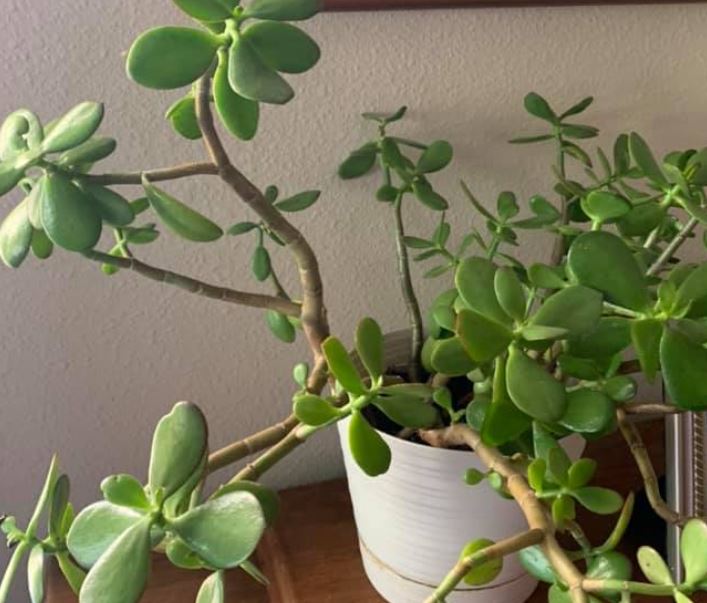
Why is my jade plant leggy?
There are a few reasons why your jade plant might become leggy. This includes:
Insufficient light
As with other succulents, the jade plant needs a sufficient amount of light to carry out photosynthesis. This means that when light is not provided as needed, less sugars are produced. This can weaken the plant and make it prone to pests and fungal diseases.
As a survival mechanism, the plants in poor light conditions will try to stretch towards any source of light to tap the resource. The plant will focus more on growing taller than getting bushier. That’s why you’ll see the leggy jade plant having fewer branches and leaves but long thin stems.
Overcrowding
Growing many plants together can also cause them to become leggy as they compete for important resources including light, water, and nutrients. While some plants will outgrow others, they are likely to remain thin and tall. This scenario is common in plants that grow under a canopy of other plants.
Overcrowding can also prevent proper air circulation around the plants which creates a conducive environment for powdery mildew and other fungal infections. Pests such as mealybugs, spider mites, and scale can also take advantage of such conditions.
Overfertilization
Overfeeding a jade plant can also contribute to leggy growth. The excess nutrients will make the plant focus more on foliage than root growth. This can weaken the root system and make it difficult for the plant to develop a strong healthy stem.
Too much fertilizer can also burn the leaves on succulents causing them to turn yellow, or brown and crispy. If you choose to fertilize your jade plant, be sure to do so sparingly during spring and summer. Use a balanced fertilizer diluted to half strength and fertilize only once a month.
How to fix a leggy jade plant
There are several ways to fix a leggy jade plant:
1. Stake the plant to provide support
Use a stake to support the plant especially if it is becoming top-heavy. This will prevent the succulent from falling over or breaking off. Choose a stake that is the same height as the plant and insert it into the soil next to the stem gently without damaging the roots.
Tie the stem of the jade plant to the stake with a twine or florist’s tape. In the meantime, avoid shaking the plant or moving it vigorously as it can make can cause it to topple over. Once you have secured the plant, you can now proceed to the next step of revival.
2. Provide adequate lighting
You can revive the beauty of your jade plant by majorly addressing the lighting issues. If your plant is not receiving enough light, move it to a place that receives bright indirect sunlight. You might need to do it gradually if you are relocating the plant from a completely shady region to a sunny location.
Jade plants need a lot of light to thrive. You have to make sure they are getting at least 6 hours of bright indirect light per day. An east or west-facing window should be a perfect spot. However, too much direct sunlight may cause a wrinkly jade plant.
If your room is not receiving enough sunlight, add artificial grow lights to supplement the natural light. Look for an LED grow light that has a high output of PAR (photosynthetic active radiation) and place it at the right distance from the plant or as directed on the label.
3. Trim back the spindly plant
You can pinch off the top of your leggy jade plant to make it focus on growing more branches. Trimming back is best done during the spring and summer months when the succulent is actively growing. Make sure to make a cut just above the node using a clean sterilized tool.
You may use the stem cuttings to propagate the jade plant. Simply place them in a cool dry place for 3 days so that they can be callous over. Then plant them in your preferred succulent potting mix. Place the pot in a place with bright indirect light and water only when the soil is dry.
The cuttings will root in 3 to 4 weeks and you can transplant them to your preferred locations.
4. Space out overcrowded plants
If you have grown too many plants together, space them out to reduce competition. You can repot the plants in their own individual pots but be sure to use well-draining succulent soil. Spacing out will also allow air and light to reach the stems thus making them healthier.
5. Water heavily to flush the soil
If you have overfertilized your jade plant, flush the soil to remove the excess salt buildup. You can do this by watering the plant heavily until water runs out through the drainage holes. However, be careful not to overwater the plant as it can cause root rot.
Once you are done flushing let the soil dry out completely before watering again. As a rule of thumb, insert a finger in the soil to check the moisture level before watering.
6. Repot the plant in fresh soil
If your leggy jade plant is not showing any recovery after all the efforts, repot it in a fresh soil mix. This will clear any doubts about any problem in the soil. Jade plant prefers well-draining soil, so make sure to use cactus or succulent mix and a pot with drainage holes at the bottom.
Final thought
Jade plant is beautiful when slightly busy and compact. When etiolated, the jade plant becomes weak and prone to falling over or breaking off. This problem is mainly caused by insufficient lighting but other factors like overcrowding and overfertilization can also make jade plants leggy.
My name is Diane M Lewik, and I am the founder of this website. I am a degree holder in plant biology from the University of California – Berkeley. Over the years, I have cultivated a vast collection of succulents and I have learned a great deal about how to grow and care for these unique plants. Feel free to ask any questions in the comment section below.
